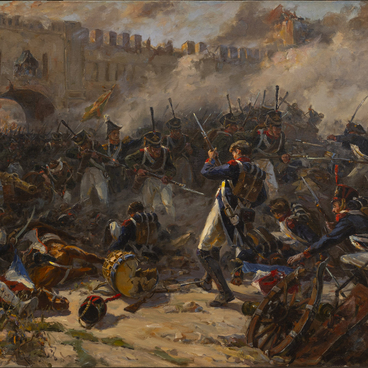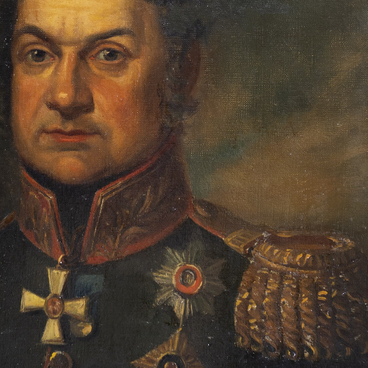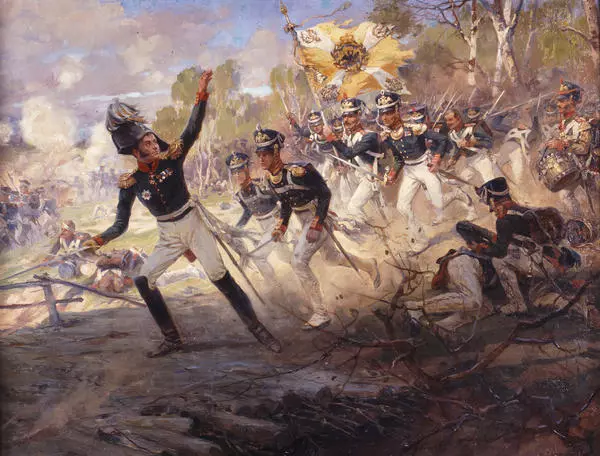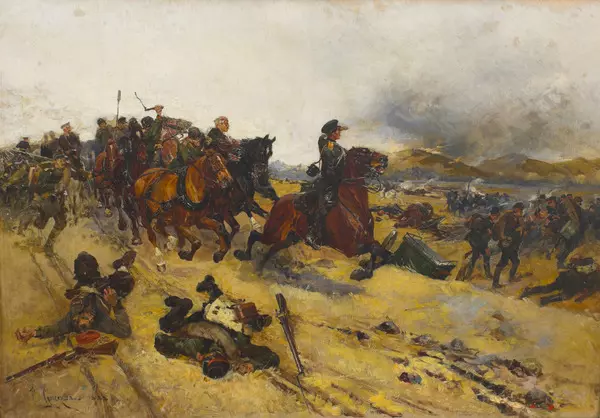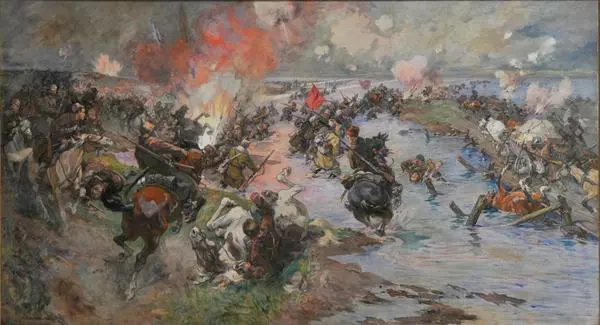The painting by Nikolay Semyonovich Samokish “The Lithuanian Life Guards Regiment in the Battle of Borodino” is a bright example of Russian battle painting of the early 20th century. The artist finished it in 1911, on the eve of the centenary of the Patriotic War. In 1961, the canvas came to the Borodino Museum from the Hermitage.
The Lithuanian Life Guards Regiment was formed in the autumn of 1811. It participated in the Battle of Borodino in its second stage. After the Bagration flèches were taken, the regiment operated on the left flank, where it suffered heavy losses — 430 lower ranks killed, 178 wounded and 113 missing.
Initially, the Lithuanian Regiment in a square organization repelled the attacks of enemy cavalry, which sought to seize the village of Semyonovskaya. However, when enemy riflemen began to occupy the neighboring height, the regiment commander, Colonel Ivan Fedorovich Udom, tried to stop them with several attacks. The last, successful one, was headed by Lieutenant Colonel Alexey Yefimovich Schwartz, who took command after senior officers, including Udoma, became injured.
Later, Udom reported to the commander of the Guards Infantry Division, Lieutenant General Nikolay Ivanovich Lavrov, “Lieutenant Colonel Schwartz remained with the regiment, which, having left as reinforcements the 2nd and 3rd battalions, which already had a lot of killed and wounded, went with the 1st battalion to the same height and having sent the riflemen, took it over. The losses on both sides were significant, and he himself received a mortal wound, from which he died the next day in the morning.”
Along with the prominent painter Franz Roubaud who created the “Battle of Borodino” panorama, Nikolay Semyonovich Samokish (1860–1944) was one of the leading Russian military artists at the turn of the 20th century. He taught and mentored many Soviet artists.
At that time, there was a tendency in military art to use the methods and techniques of other genres of painting, which was developing rapidly in the late 19th century. Artists began to abandon complex compositions and fine details in favor of applying wide free brushstrokes that allowed them to fully express the plot.

